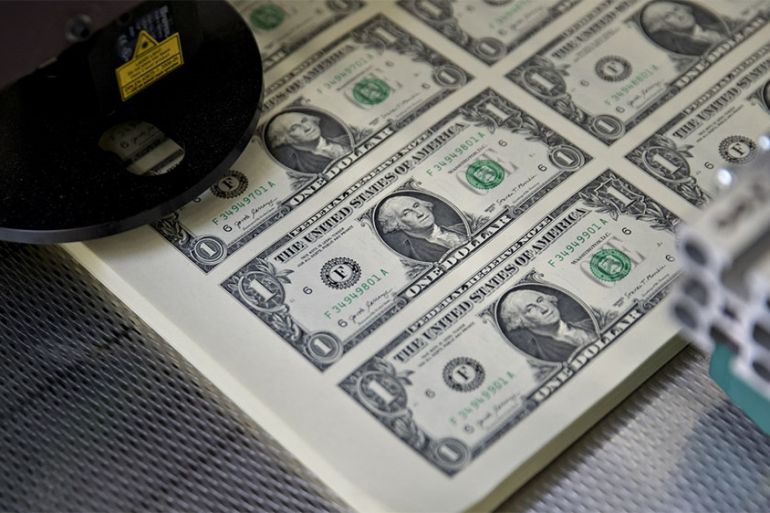Filthy dollars: Fed quarantines currency repatriated from Asia
The US Federal Reserve is worried about recirculating dollars repatriated from Asia, as they may carry the coronavirus.

The greenback faces the same fate as many travellers returning home from China and other coronavirus hot spots.
The United States Federal Reserve has begun quarantining physical dollars that it repatriates from Asia before recirculating them in the US financial system as a precautionary measure against spreading the virus, a Fed spokesperson told Reuters.
Keep reading
list of 3 itemsCoronavirus: Which countries have confirmed cases?
Coronavirus sparks concerns over European financial operations
The spokesperson said regional Fed banks that help manage the money supply will set aside shipments of dollars from Asia for seven to 10 days before processing and redistributing them to financial institutions. The policy, first reported by Reuters, was implemented on February 21, 2020 the official said.
The coronavirus outbreak originated in China, and more than 100,000 people have been infected in over 85 countries, according to a Reuters tally based on statements from health ministries and government officials.
According to the US Centers for Disease Control and Prevention (CDC), it “may be possible” to transmit the virus through objects that have had direct contact with it, but person-to-person contact is the main means of spreading the disease. The CDC recommends US residents returning from China and other high-risk countries stay home for 14 days.
The World Health Organization, however, has been much more cautious regarding risks posed by currency notes, advising consumers to use contactless payments whenever possible, according to several United Kingdom media reports.
As the global reserve currency, US dollars are the most widely distributed notes in the world, with around $1.75 trillion worth of cash in circulation globally, according to the Fed. Much that is circulated overseas, particularly in Asia, where the dollar is often stronger than local currencies.
It is also filthy. A 2014 study by researchers at New York University identified 3,000 types of bacteria on dollar bills due to how widely and frequently they change hands.
The US central bank has not gone as far as its counterparts in China and Korea, which have ordered local currency notes to be disinfected with ultraviolet light or destroyed altogether. But Fed officials are in regular contact with the CDC and US State Department regarding the spread of the virus, and are prepared to add other regions to its quarantine list, the spokesperson said.
The 12 Fed banks – from Richmond, Virginia to San Francisco, California – are responsible for managing the supply of dollars and coins, accepting deposits of excess cash from banks across the world while doling out currency to institutions that request it. Some overseas banks ship their excess dollars back to the US on commercial flights.
The reserve banks process the currency they receive, including removing damaged notes from circulation and identifying counterfeit bills. It takes between five and 60 days for the Fed to process money, with higher value notes being processed most quickly, the San Francisco Fed says on its website.